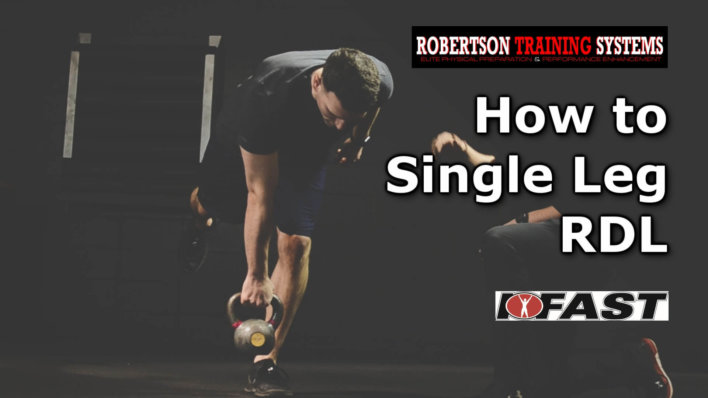The single-leg Romanian deadlift (RDL) falls into the camp of “awesome exercises that are also really hard to do.”
Many people assume that because a single-leg RDL uses less load than a trap bar, conventional or traditional RDL that it’s somehow an “easier” exercise.
That, my friend, would be a false assumption.
In fact, single-leg RDL’s are an incredibly challenging exercise for at least two reasons:
- With only one foot on the ground, you’re really challenging tri-planar stability of the foot, ankle, knee and hip, and
- You’re loading the hinge pattern (which in and of itself can be tough) in a unilateral fashion.
But just because it’s challenging doesn’t mean you shouldn’t be doing it – or at least working towards it.
If you (or your clients and athletes) don’t have the stability and control just yet, be sure to watch my previous video on how to kickstand RDL. It’s the perfect regression as it trains the same pattern, but with both feet on the ground.
But once you’re ready to rock, this quick tutorial should give you the major points to focus on when performing the single-leg RDL!
Now that you’ve watched the video, here are a few key areas to focus on when you’re performing, coaching, or cuing the lift:
- Start with a soft knee! Make sure you can feel the whole foot at the start, balancing the weight between the toes and heels.
- Keep the back flat. Unlocking the knee will stack the ribcage on top of the pelvis, and then simply work through whatever your current range of motion is – don’t force it.
- The pelvis should stay square. In a true single-leg exercise, it’s very hard to control hip and pelvic alignment. Work on keeping the hips and pelvis square towards the front throughout. If a client/athlete is struggling here, you may need to physically put your hands on their hips to give them an idea of what “square” really is!
- Feel the whole foot throughout. Just like keeping the hips square can be difficult, it may be tough to feel the whole foot as you lower down. Don’t just think about feeling the toes/heels, but the inside/outside of the foot as well.
The single-leg RDL is a challenging exercise, but one that’s definitely worth mastering as well.
I hope these simple tips make your performance, coaching, and cuing of this lift a little bit better!
All the best,
MR

